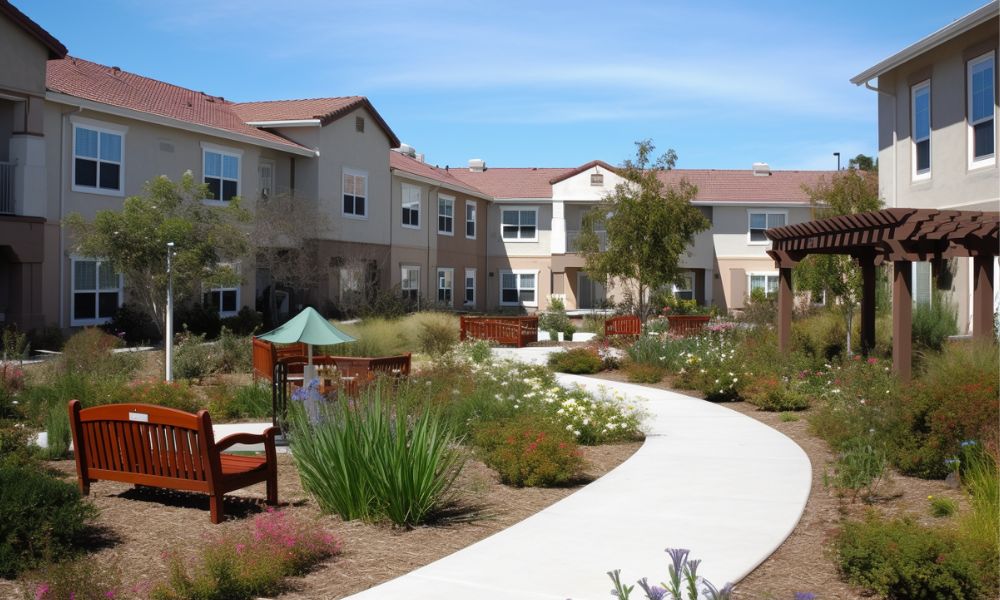Understanding Senior Living: Options, Costs & Lifestyle
Explore the range of senior living choices and learn how to match housing, care, and lifestyle to retirement goals. This comprehensive guide covers independent and assisted living, two-bedroom apartments, costs, payment models, social benefits, and practical tips for planning a comfortable transition to a senior community.

Moving into a senior living community is a significant life decision that blends lifestyle preferences with practical needs. Modern communities are designed to support independence while offering safety, services, and social opportunities. This guide explains the common living arrangements, financial models, lifestyle advantages, and planning steps to help you make an informed choice.
Features of Modern Senior Living Communities
Contemporary senior living communities aim to make daily life easier and more comfortable. One popular option is a two-bedroom apartment, which provides extra space for hobbies, visitors, or a dedicated home office. These units typically come with full kitchens, accessible bathrooms designed for mobility limitations, emergency response systems, and individualized heating and cooling controls.
Beyond private units, most communities include shared amenities that enhance convenience and well-being. Common spaces may feature lounges, libraries, and activity rooms. Many facilities offer on-site fitness centers, walking paths, garden areas, and planned transportation for appointments and outings. Staffed reception desks, scheduled maintenance, and housekeeping services reduce household burdens and help residents focus on social and recreational pursuits.
Financial Considerations for Senior Housing
Senior living is offered through several payment structures, so it is important to understand how each works. Some communities operate on a rental basis, with straightforward monthly fees. Others use buy-in or entrance-fee models, where a larger upfront payment secures residency and may reduce future monthly charges. Continuing care retirement communities often combine entrance fees with tiered care options.
Monthly charges generally cover core items like housing, some utilities, maintenance, and basic services. However, care-related services such as personal assistance, skilled nursing, specialized therapies, or medication management can incur additional fees. Review contracts carefully for what is included, which services are optional, and how price increases are handled. Long-term care insurance, veterans benefits, and Medicaid eligibility can affect affordability for certain residents, so consult financial and legal advisors when evaluating options.
| Accommodation Type | Average Monthly Cost | Typical Included Services |
|---|---|---|
| Independent Living | $2,000 - $4,000 | Meals, housekeeping, social activities |
| Assisted Living | $3,500 - $6,500 | Above plus personal care, medication assistance |
| Two-Bedroom Units | $3,500 - $7,500 | Varies by community; may include upgraded amenities |
Prices, rates, or cost estimates mentioned in this article are based on the latest available information but may change over time. Independent research is advised before making financial decisions.
Planning Your Retirement Living Move
Choosing the right community involves more than price. Consider location relative to family and healthcare providers, the size and culture of the community, and the range of activities and services offered. Think about short- and long-term needs: does the community provide higher levels of care if health requirements change? Are there private and social spaces that match your lifestyle?
Many communities welcome prospective residents for trial stays or short visits. Use these opportunities to attend meals, participate in activities, and talk with staff and current residents. Ask for a copy of the resident agreement and a breakdown of fees, and clarify policies on refunds, transfers, and termination.
Social and Lifestyle Benefits
One of the greatest advantages of senior living communities is the social infrastructure they create. Organized programs, interest-based clubs, group outings, and educational offerings encourage friendships and ongoing engagement. Access to communal dining and regular events makes it easier to maintain a rich social life without the logistics of planning outings alone.
Residents can preserve independence while having support for daily tasks when needed. Many facilities tailor activities to varying ability levels, ensuring that both active residents and those with limited mobility can participate in meaningful ways. Intergenerational programs, cultural events, and learning opportunities are common, providing mental stimulation and community connection.
Making the Transition: Practical Steps
Preparing to move to a senior living community takes time and organization. Start by assessing current needs and anticipating future care requirements. Create a checklist for downsizing possessions and prioritize items that contribute to comfort and familiarity in a new apartment.
Consider logistical support options offered by the community, such as move coordination, packing services, or lists of recommended movers. Label boxes clearly and prepare an essentials box for the first few days. Involve family members in planning and decision making, especially when legal or financial documents need review.
Take advantage of orientation sessions and welcome programs that help new residents connect with neighbors and learn about on-site resources. Allow time to adapt; social integration and establishing routines are important aspects of a successful transition.
This article is for informational purposes only and should not be considered medical advice. Please consult a qualified healthcare professional for personalized guidance and treatment.





